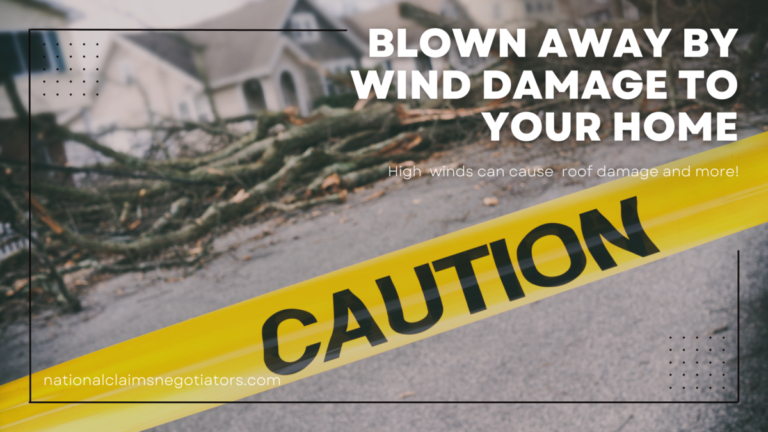Protecting Yourself From Damaging Winds In Fast-Moving Storms

Table of Contents
Understanding Fast-Moving Storm Dynamics and Damaging Wind Patterns
Fast-moving storms, such as derechos and severe thunderstorms, generate powerful winds through several mechanisms. Significant pressure gradients—sudden changes in atmospheric pressure—create strong wind speeds as air rushes from high to low pressure areas. Wind shear, the variation in wind speed and direction with height, further intensifies these winds, creating turbulent and unpredictable conditions.
Several types of damaging winds are associated with these storms:
- Straight-line winds: These are powerful, straight winds that can reach hurricane-force speeds, causing widespread damage. They're often associated with downbursts and microbursts.
- Tornadoes: While less common than straight-line winds, tornadoes are violently rotating columns of air that can produce the most destructive damaging winds.
Understanding the dangers is vital:
- Downbursts and microbursts: These are rapidly descending columns of air that can cause incredibly strong, localized winds near the ground. They often hit suddenly and without warning.
- Unpredictability: The direction and speed of damaging winds in fast-moving storms can shift rapidly, making it challenging to predict their exact path.
- Real-time weather updates: Staying informed is paramount. Utilize resources like the National Weather Service (weather.gov) for up-to-the-minute weather alerts and forecasts. Download their app for mobile alerts.
Pre-Storm Preparation: Minimizing Risk from Damaging Winds
Proactive preparation is your best defense against damaging winds. Taking steps before a storm hits significantly reduces your risk:
- Develop a family emergency plan: Establish evacuation routes, meeting points, and communication strategies. Ensure everyone knows the plan.
- Secure your property: Bring loose objects inside: patio furniture, garbage cans, grills, potted plants—anything that could become a dangerous projectile in high winds.
- Tree and branch trimming: Trim or remove trees and branches that are close to your house. This reduces the risk of them falling and damaging your home.
- Reinforce your home: Board up windows or install storm shutters to protect against shattering glass.
- Gather emergency supplies: Stockpile water, non-perishable food, a first-aid kit, flashlights, batteries, and a portable radio.
- Charge electronic devices: Ensure phones, tablets, and other electronic devices are fully charged to stay connected.
- Identify a safe room: Designate a safe room in your home—an interior room on the lowest level, ideally without windows—where you can seek shelter during the storm.
During the Storm: Staying Safe from High Winds
Staying informed and following official advice is critical during the storm:
- Stay indoors: Remain inside your designated safe room or an interior room away from windows and exterior doors. Avoid basements unless a tornado warning is issued.
- Tornado warnings: If a tornado warning is issued, seek shelter immediately in a basement or interior room on the lowest level of your home. Get under heavy furniture for added protection.
- Monitor weather reports: Continue to monitor weather reports for updates on the storm's intensity and movement.
- Avoid going outside: Never attempt to go outside during the height of the storm. This is extremely dangerous.
- Driving safety: If you're driving and encounter high winds, pull over to a safe location, away from trees and power lines, and wait for the storm to pass. Do not attempt to drive in extremely high winds.
Post-Storm Safety: Assessing Damage from Powerful Winds
After the storm has passed, prioritize safety and damage assessment:
- Check for injuries: Check yourself and your family for injuries and seek medical attention if needed.
- Home inspection: Carefully inspect your home for structural damage. Report any significant damage to the appropriate authorities.
- Downed power lines: Avoid downed power lines at all costs. Assume they are energized and dangerous. Report them immediately to the power company.
- Debris awareness: Be aware of potential hazards like debris, broken glass, and flooding. Wear appropriate safety gear (gloves, sturdy shoes) when cleaning up debris.
- Document damage: Take photos and videos of any damage to your property for insurance purposes.
Conclusion
Protecting yourself from damaging winds requires a multi-faceted approach. By preparing beforehand, staying informed during the storm, and taking appropriate precautions afterward, you can significantly reduce the risk to yourself and your family. Remember the importance of developing a family emergency plan, securing your property, and having a safe room designated within your home. Preparing for damaging winds, mitigating damaging wind risks, and staying safe from damaging winds are all crucial steps. For more information on severe weather safety and real-time alerts, visit the National Weather Service website at [link to National Weather Service website].

Featured Posts
-
 Bbc Adapting Agatha Christies Endless Night For Television Series
May 20, 2025
Bbc Adapting Agatha Christies Endless Night For Television Series
May 20, 2025 -
 Patra Odigos Efimerion Iatron Gia To Savvatokyriako
May 20, 2025
Patra Odigos Efimerion Iatron Gia To Savvatokyriako
May 20, 2025 -
 Broadcoms Proposed V Mware Price Hike At And T Details A 1 050 Cost Surge
May 20, 2025
Broadcoms Proposed V Mware Price Hike At And T Details A 1 050 Cost Surge
May 20, 2025 -
 Visita De Michael Schumacher A Su Nieta Viaje En Helicoptero Desde Mallorca
May 20, 2025
Visita De Michael Schumacher A Su Nieta Viaje En Helicoptero Desde Mallorca
May 20, 2025 -
 Oil Firms Face 1 231 Billion Recovery Effort By Representatives
May 20, 2025
Oil Firms Face 1 231 Billion Recovery Effort By Representatives
May 20, 2025
